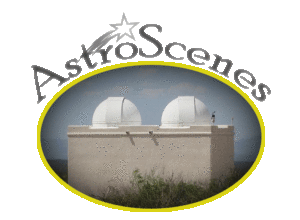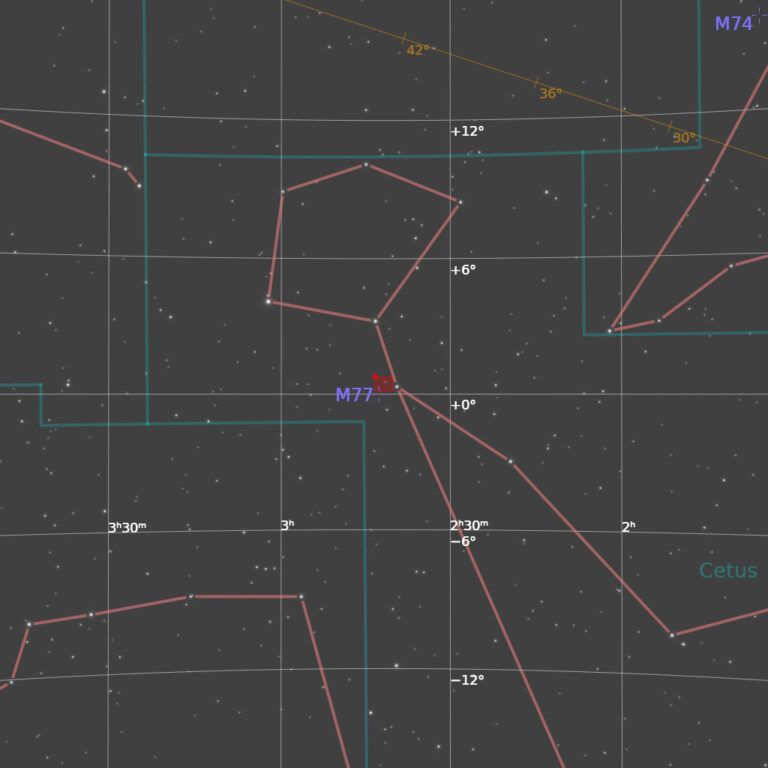NGC 1055
Edge-on Spiral Galaxy, Cetus
- Description
- Technical
- Links
NGC 1055 is an edge-on spiral galaxy located in the constellation Cetus. The galaxy has a prominent nuclear bulge crossed by a wide, knotty, dark lane of dust and gas. The spiral arm structure appears to be elevated above the galaxy’s plane and obscures the upper half of the bulge. It was discovered by German-British astronomer William Herschel on December 18, 1783, from his home in Slough, England.
NGC 1055 is a binary system together with the bright spiral galaxy M77 (NGC 1068). These two are the largest galaxies of a small galaxy group that also includes NGC 1073, and five other small irregular galaxies. Based on the published redshift, (Hubble Constant of 62 km/s per Mpc) a rough distance estimate for NGC 1055 is 52 million light-years, with a diameter of about 114,400 light-years. The separation between NGC 1055 and M77 is about 7 million light-years.
NGC 1055 is a bright infrared and radio source, particularly in the wavelength for warm carbon monoxide. Astronomers believe that this results from unusually active star formation. It most likely has a transitional nucleus, however, there is a small chance that it could be a LINER.
NGC 1055 is a binary system together with the bright spiral galaxy M77 (NGC 1068). These two are the largest galaxies of a small galaxy group that also includes NGC 1073, and five other small irregular galaxies. Based on the published redshift, (Hubble Constant of 62 km/s per Mpc) a rough distance estimate for NGC 1055 is 52 million light-years, with a diameter of about 114,400 light-years. The separation between NGC 1055 and M77 is about 7 million light-years.
NGC 1055 is a bright infrared and radio source, particularly in the wavelength for warm carbon monoxide. Astronomers believe that this results from unusually active star formation. It most likely has a transitional nucleus, however, there is a small chance that it could be a LINER.
Telescope: Planewave CDK17 (FR) f4.5
Mount: Astro Physics 1600GTO
Camera: QHY16200A/ Integral FW
Guider: Agena Starguide II / ZWO ASI178MM
Filters: Astronomik 36mm LRGB
L: 38×10 mins = 380 mins, R: 24×10 mins = 240 mins, G: 24×10 mins = 240 mins, B: 24×10 mins = 240 mins
Total Imaging Time: 18h 20m
Data Imaged remotely on 7 nights during September, 2025.
Imaged from Observatorio El Sauce, Chile, in partnership with Fred Espenak.
Data acquisition & Processing by David Churchill.
None


